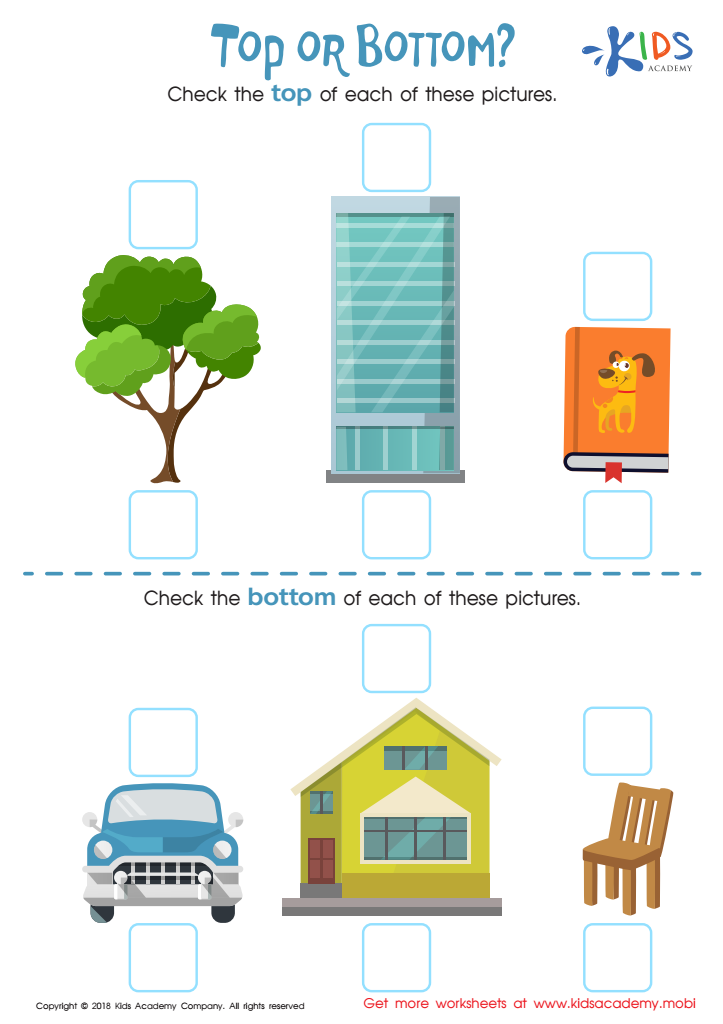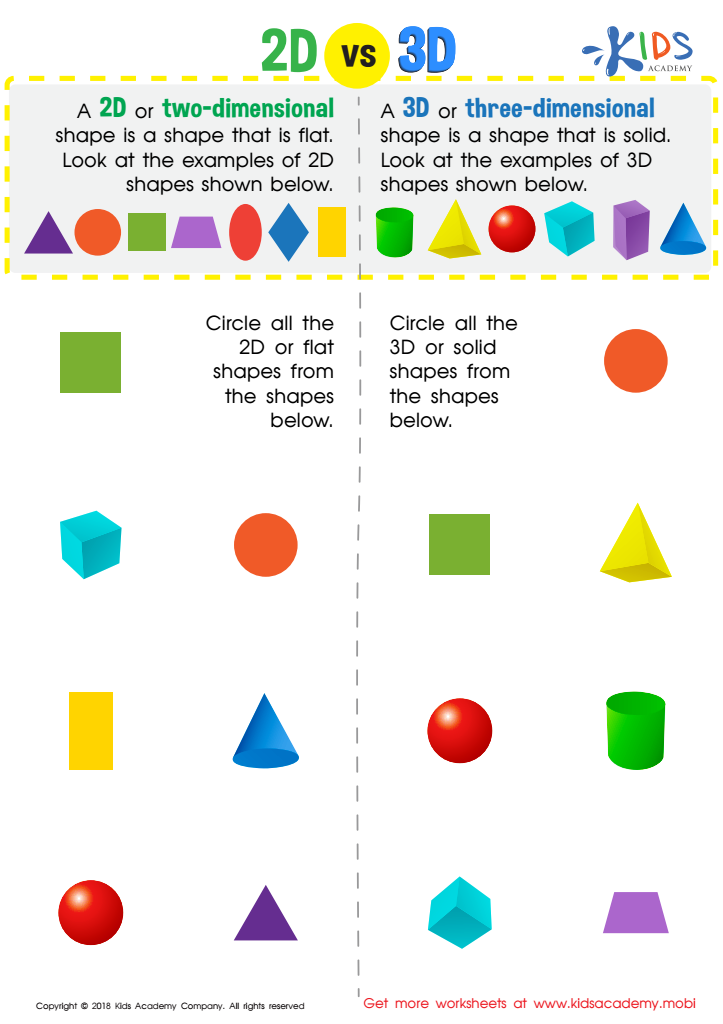Visual perception Normal Geometry Worksheets for Ages 3-4
3 filtered results
-
From - To
Introduce your little ones to the world of shapes and spatial relationships with our engaging Visual Perception Normal Geometry Worksheets for ages 3-4! Designed to support early learners, these worksheets enhance children's visual discrimination and spatial awareness through fun and interactive activities. Each worksheet focuses on recognizing, matching, and sorting different geometric shapes, helping to build a strong foundation in geometry. Ideal for home or classroom use, these targeted exercises promote critical thinking and problem-solving skills while keeping children entertained. Get ready to boost your child's confidence in geometry with our thoughtfully crafted worksheets, ensuring a playful approach to learning essential math concepts!


Top or Bottom Worksheet


Preschool Geometry Match Up Worksheet


2D vs 3D Shapes Worksheet
Visual perception in early childhood, particularly in normal geometry for ages 3-4, is crucial for several reasons that parents and teachers should prioritize. Firstly, visual perception forms the foundation of a child's ability to understand shapes, sizes, and spatial relationships, which are fundamental concepts in mathematics and everyday life. At this age, children are developing their ability to recognize and differentiate geometric shapes, which enhances their problem-solving skills and cognitive development.
Moreover, engaging children in activities that promote visual perception, such as identifying shapes and patterns or engaging in simple spatial puzzles, cultivates their observation skills and attentiveness, which are essential for learning. Early exposure to geometric concepts can also boost children's confidence in their mathematical abilities, setting a positive attitude towards math education in later years.
Furthermore, strong visual perception skills are linked to literacy development. Many letters and numbers have geometric foundations, and being able to recognize these shapes can facilitate reading and writing readiness. By investing in visual perception activities, parents and teachers not only enhance children's academic skills but also support their overall cognitive growth, ensuring a well-rounded start to their educational journey. Thus, prioritizing normal geometry equips children with essential lifelong skills.
 Assign to My Students
Assign to My Students















